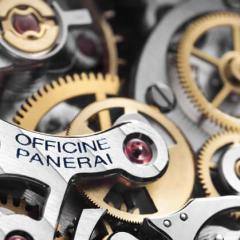PANERAI OPIII DATE ADVANCES ONLY HALF DAY
-
Recently Browsing
- No registered users viewing this page.
-
Topics
-
Posts
-
I've never seen them, then again, I haven't got a ton of experience, but "common"? Really? In what context have you seen them? I'm not questioning you. I am sincerely curious why I've missed it. An alternative to Fixodrop is to apply less oil (no more than 50 % of the circle area). The only downside would be that it would shorten the service interval. More oil will prolong the service interval, but if the movement is subjected to trauma, there's a risk it will be displaced. Fixodrop makes it more stable. Unfortunately, Fixodrop is seriously expensive.
-
By LittleWatchShop · Posted
I plan to continue this thread until done. I received the watch today. My first step was to make measurements. Here they are. Here is an image of this model watch retrieved from ebay Here is my sketch of the bezel profile that I need to make. No dimensions yet as I am pondering that. Question: Should the bezel grip the crystal? The crystal is already gripping a lip of the case. -
By Neverenoughwatches · Posted
Be interesting to see who made it -
I'm in the middle of restoring a 1980 Bulova 666 (Devil Diver) and am trying to confirm how to handle the bezel. (see pics) It was quite dirty and grimy (didn't rotate) but after cleaning and soaking a bit, it started turning and I managed to pull the bezel off the case. There is no click spring nor retention ring, only a worn out o-ring inside the bezel. I am concluding that the o-ring is there as a tension ring to hold the bezel in place(?), as the bezel sits outside the crystal, so I know it's not for waterproofing. Can someone confirm: 1) Did some Bulova/Accutrons from this era have these types of free-rotating bezels with only a rubber o-ring to help keep the bezel attached? 2) Is it as simple as matching the o-ring, applying a bit of silicon grease and just pressing the ring back on? 3) Wouldn't see very sturdy. Is there anything else needed to reduce the chance of the bezel coming off (other than glue) I've handled "normal" bezels in years past with click springs and metal wire to retain the bezel, but servicing one with only an o-ring is new to me. I would appreciate any feedback/experience from others. Much appreciated.
-
By coreymsnow · Posted
Hi folks, I'm doing some homework on getting a watchmaker's lathe, and it's clear I have a lot to learn. But I know one goal: I want to be able to fabricate wheels, which would require an indexing capability. I know how to use large lathes- like, giant metal lathes- but my experience is a few decades old now (but you never forget the smell of the metal cutting oil). So I'm looking to learn anew, and have a goal to get to a point where I can fabricate some basic watch parts. I also have no specific timeframe and want to do this right, so I'll be patient and learn what I need to before spending the money. I know I'm not going to get anything for a pittance, but I'm also not really able to put together the scratch for a $5-$10k lathe. What's out there for a hobbyist that can either handle some fabrication out of the box or can be relatively easily made to do so? Thanks!
-







Recommended Posts
Join the conversation
You can post now and register later. If you have an account, sign in now to post with your account.
Note: Your post will require moderator approval before it will be visible.